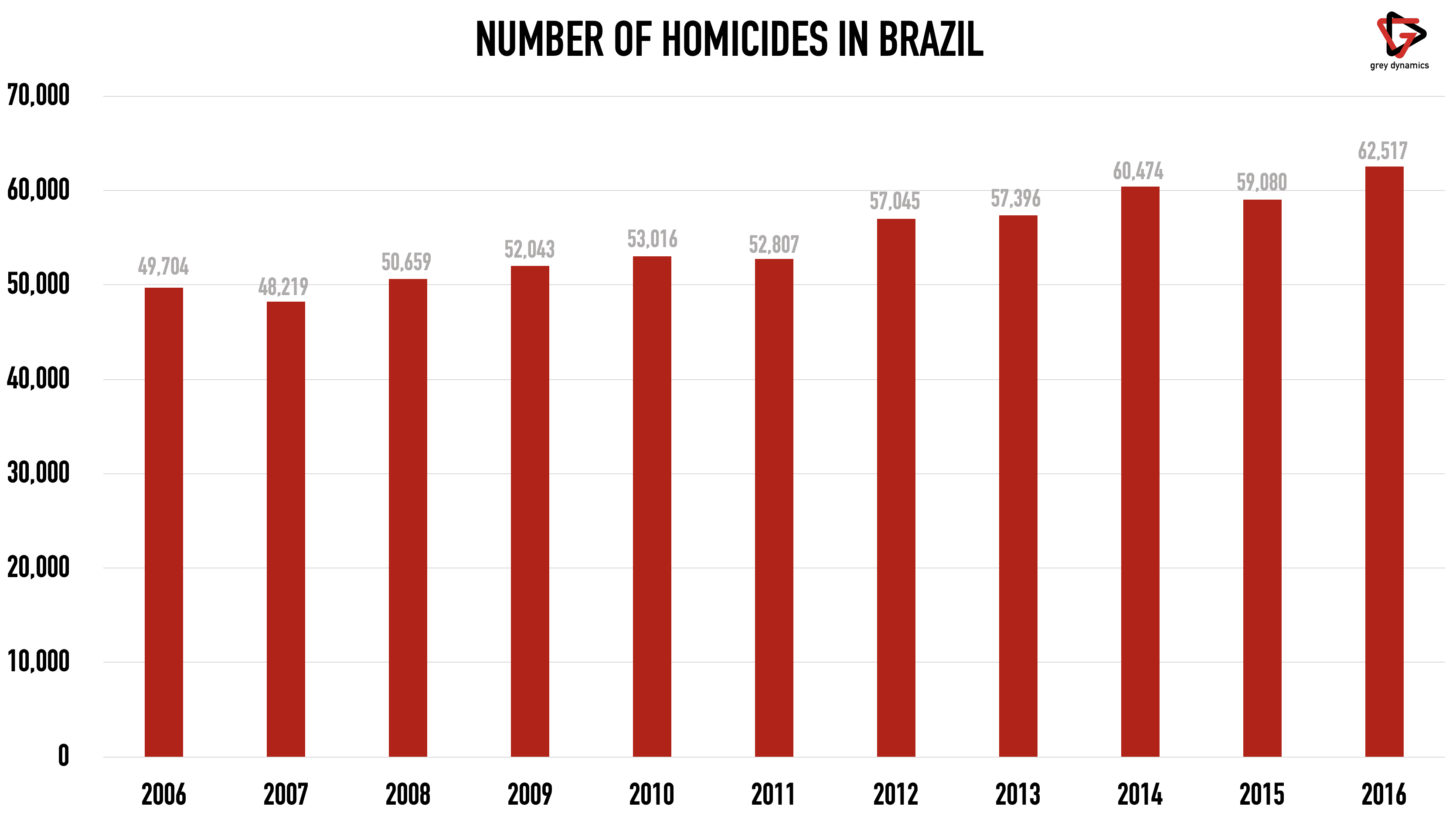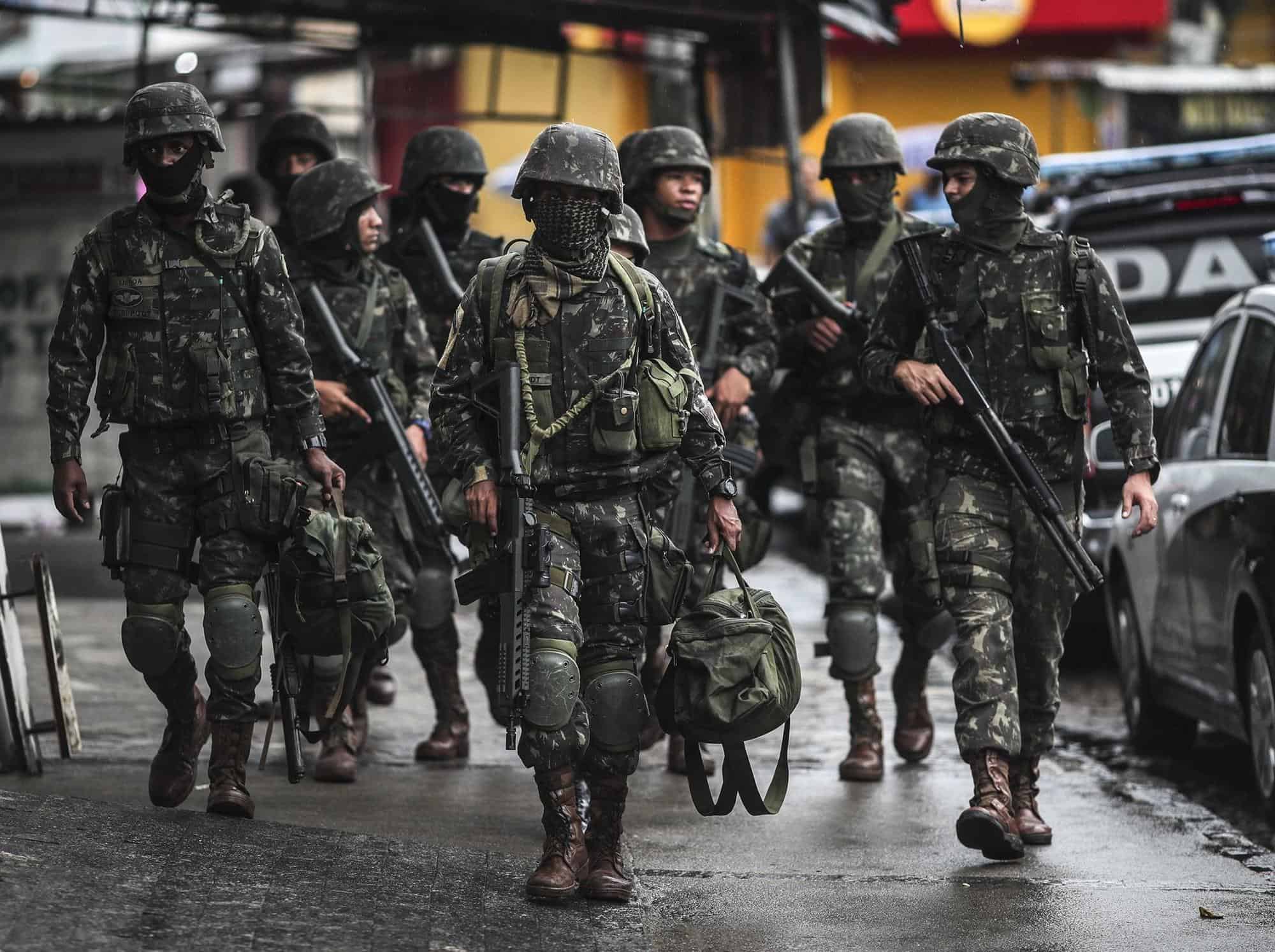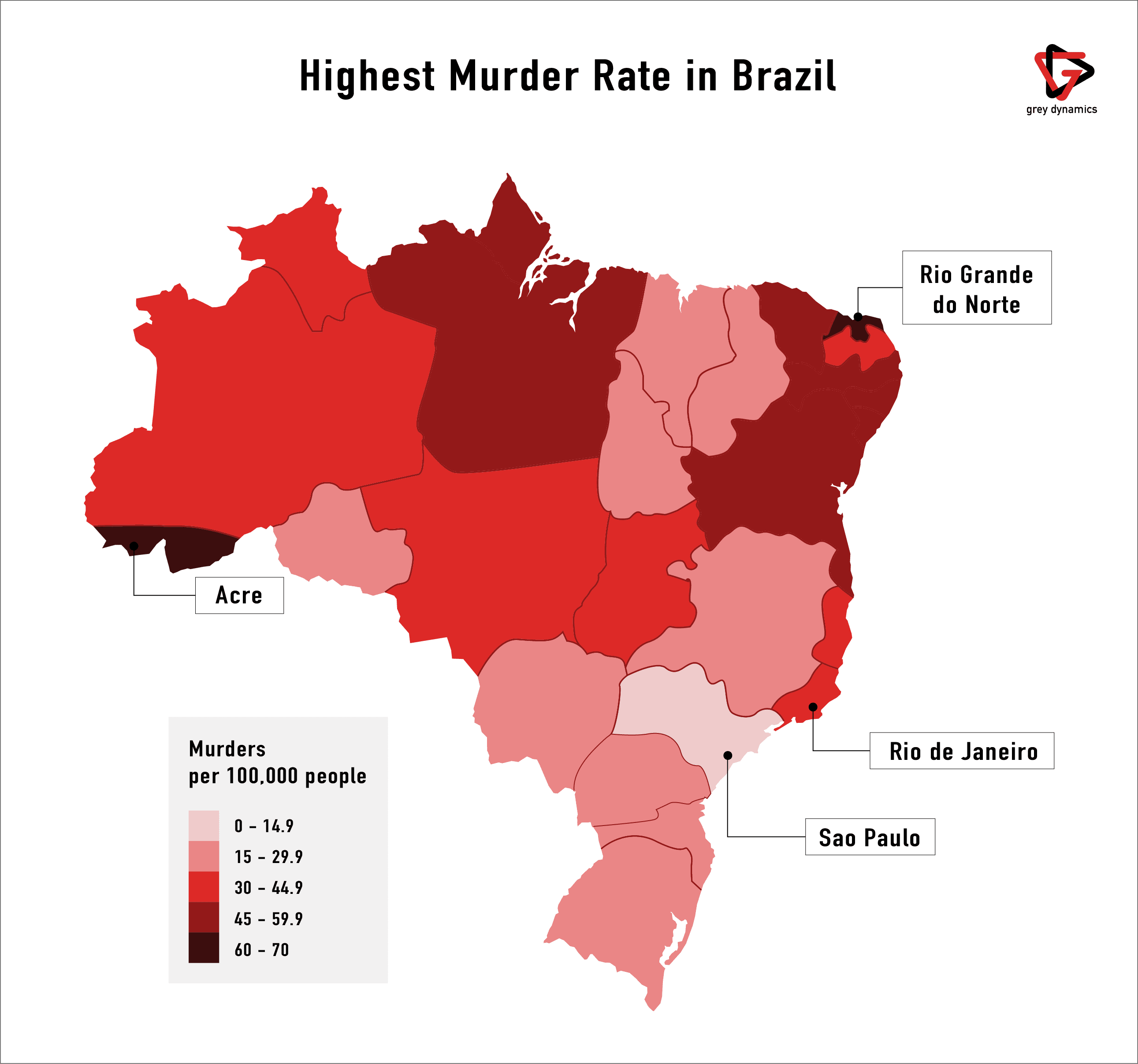Brazil continues to be plagued by one of the highest homicide rates in the world. Generally, it is a public security disaster. There are many factors behind the deepening insecurity. Economic struggles and corruption scandals have hurt the government’s ability to spend on public safety. Turf wars between gangs have led to repeated outbreaks of violence. A lack of political will has impeded efforts to overhaul flawed policies. President Jair Bolsonaro capitalized on such sentiments during his 2018 campaign. He so proposed extreme policies such as facilitating gun ownership for all and rewarding police for extrajudicial killings.
- Latin America accounts for one-third of the world’s murders, roughly 400 per day. Approximately half of them occur in Brazil.
- The national homicide rate reached an all-time high of 30.8 homicides per 100,000 citizens in 2017—. There was a recording of 63,880 homicides in total.
- Almost 30 per cent of homicides were concentrated in state capitals.
- Homicide rates have risen at a much faster pace in northern states like Pernambuco, Ceará, and Rio Grande do Norte. The more urbanized South has done less so.
- Just 10% of homicides in Brazil lead to arrests.
- Brazil is suffering its longest and deepest recession since the 1930s

The Militarization of Rio
In February 2018, rising violence led President Michel Temer to order the army to command the capital’s police forces. It was an attempt to curb the violence by drug gangs. Those who have “virtually taken over” Rio’s metropolitan area of 12 million people, Temer said. Critics alleged the decision was taken for political posturing in an election year. Temer’s decision marked the first time a Brazilian president mobilized the armed forces to take over a city. Last time before that was when the country’s military dictatorship ended in 1985.
Rio city Mayor Marcelo Crivella says the military intervention has been accompanied by a “disproportionate use of force.” Even before the military intervention, in 2017, police-involved shootings resulted in over 1,000 civilian deaths in the state of Rio de Janeiro. At the same time, killings of police officers are on the rise. As many as 126 military police officers were killed in Rio in the same year. Six months after thousands of soldiers were deployed to Rio, homicides in the state were up 5% over the same period in 2017. Beyond the human rights concerns, Temer’s plan carried substantial risk by creating a political climate for those advocating for even more aggressive methods.

“Shoot-to-Kill”
The security concerns of the electorate paved the way to victory for then-Rio congressman Jair Bolsonaro in the 2018 presidential election. He emerged as a popular presidential candidate on a platform of making weapons more accessible to citizens and providing Brazilian police more latitude to shoot and kill criminals. Bolsonaro was highly critical of Temer’s intervention plan, suggesting that the military likewise will not have enough leeway to conduct an all-out war against criminals. He stated, “Everyone says we’re at war. Rio is at war. But what kind of war can only one side fire?”. Wilson Witzel, a former federal judge and the new Governor of Rio, supports this“shoot-to-kill” stance. Wilson, who was inaugurated in January, has authorised the free use of force to reign in the homicide rate in Brazil.
A National Tragedy
Homicides and violent crime occur in all parts of Brazil, yet they are distributed unequally—both geographically and demographically. The states with the highest rates of violent deaths in the country were located in the less developed North and Northeast regions. Violence in Brazil also disproportionately affects youth and minority groups. In January, just days after Bolsonaro’s inauguration, security forces say three rival drug gangs carried out more than 160 attacks in the northeastern city of Fortaleza. These attacks were considered in retaliation for a proposal to end the practice of separating gang factions inside Brazil’s prisons. Five hundred National Guard troops were deployed to the region to quell the violence.
Northern Brazil has been hit especially hard by violence due to the end of a truce between Brazil’s two most powerful criminal groups, the First Capital Command and Red Command. The region is the closest geographic point to transport drugs to Africa and Europe.

‘A Good Criminal is a Dead Criminal’
Homicide and general insecurity are very valid concerns throughout Brazil. The 2018 presidential election demonstrated the people’s desperation to address the issue. Aline Burni, a political science PhD candidate at Minas Gerais Federal University in Brazil, stated to InSight Crime: “In Brazil, there isn’t a culture of mainstreaming human rights, so the discourse of ‘a good criminal is a dead criminal’ appeals to a lot of people.” However, it is far from evident that the existing proposals of Bolsanaro and others will work, and they could very well be disastrous. Ignacio Cano, a public security researcher at the Rio State University, believes “the real issues are corruption and a lack of efficiency and intelligence in investigations.”
Early indications of a failed policy were evident earlier this month when 13 individuals were killed in Rio by Brazilian Military police, several executed after they already surrendered. What is also clear is that Brazil’s issues are beyond policing and structural. Comprehensive social and economic policy proposals are severely lacking in the political discourse. These policies may be a pipe dream given the country’s recent epidemic of high-level corruption and penchant for using force.
